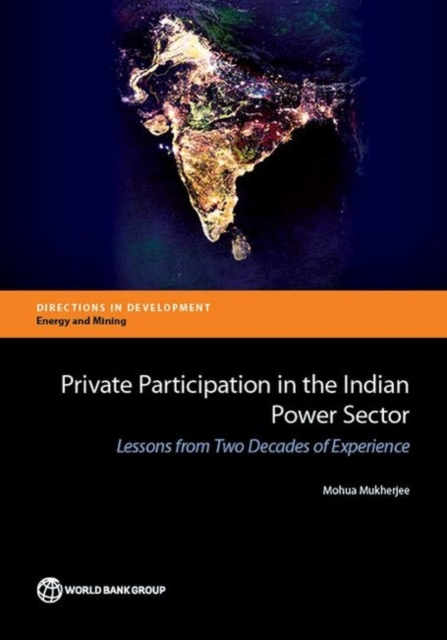
Private Participation in the Indian Power Sector : Lessons from Two Decades of Experience Paperback / softback
by Mohua Mukherjee
Part of the Directions in Development - Energy and Mining series
Paperback / softback
Description
The state of the Indian power sector today is an acknowledged constraint to the country's growth aspirations.
This book examines the home-grown Indian experience with private sector participation in power, identifies emerging risks, and proposes specific actions for government consideration, so that the power sector may fulfill its important role in India's growth story.
Seeking financing, efficiency, and project management skills from the private sector to complement public sector efforts, the state governments and the central government have invited private participation in power for the past two decades.
They have followed a continuously evolving process starting with the independent power producer policy of the early 1990s, which sought only to attract new investment in generation.
Despite these efforts, the rate of growth in energy supply has not kept pace with the growth in demand.
Much more private sector investment and engagement in the sector is likely to be required to complement the government's own efforts to improve supply, quality, and reliability of power. The passage of the Electricity Act of 2003 was a signature achievement, moving the sector away from the previous route of negotiated Memoranda of Understanding with investors to a market-driven approach that forced potential investors to compete aggressively for generation, and later also transmission, contracts.
Removal of generation licensing requirements and the introduction of competition under the Electricity Act elicited a significant private sector response in generation, a limited but respectable response in transmission (few transmission lines were tendered in the first place), and a varied but limited response in distribution.
The quality of baseline data provided to the distribution franchisee about the state of the network and the customer base is a perennial problem.
Lessons learned about methods for successful distribution franchising, including specified loss reduction trajectories, are gradually finding their way into standardized bidding documents.
Different qualification requirements for bidders are emerging for different locations.
In the future, franchisees may also need greater independent access to power supply for their service areas, for example, by combining generation and distribution through private players.
Information
-
Available to Order - This title is available to order, with delivery expected within 2 weeks
- Format:Paperback / softback
- Pages:208 pages
- Publisher:World Bank Publications
- Publication Date:30/09/2014
- Category:
- ISBN:9781464803390
Information
-
Available to Order - This title is available to order, with delivery expected within 2 weeks
- Format:Paperback / softback
- Pages:208 pages
- Publisher:World Bank Publications
- Publication Date:30/09/2014
- Category:
- ISBN:9781464803390







